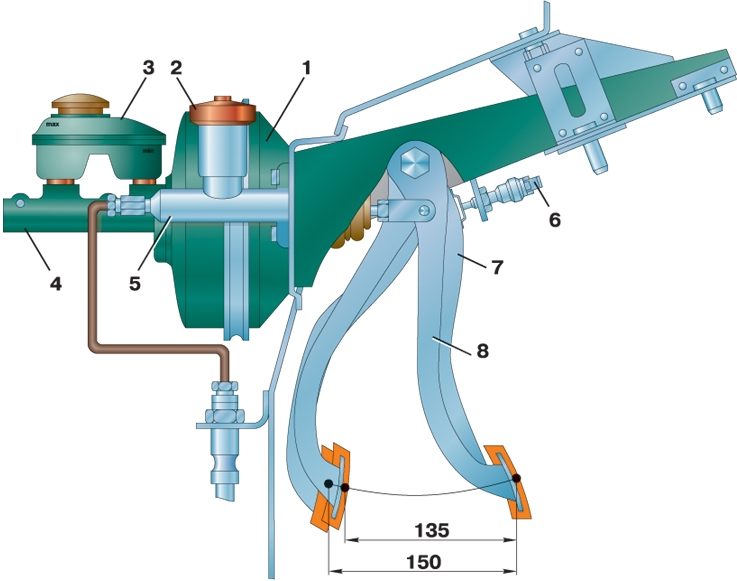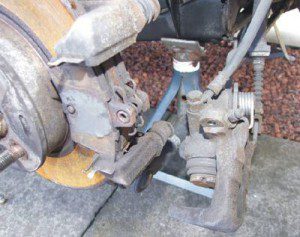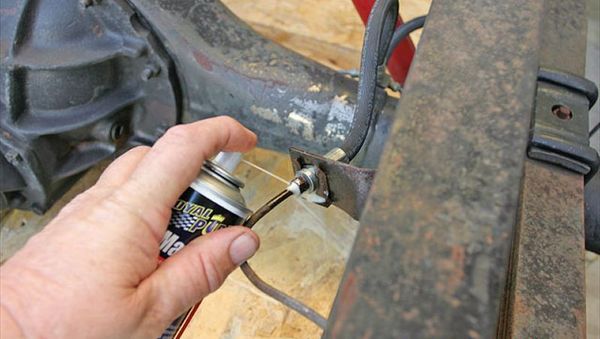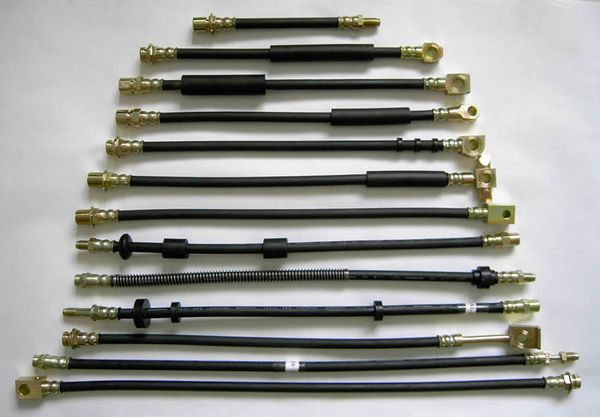
Soft brake pedal
 The problem with the soft brake pedal usually occurs in older cars, respectively. cars with lower quality or running service. Since brakes are one of the most important elements of active safety, this problem should not be underestimated.
The problem with the soft brake pedal usually occurs in older cars, respectively. cars with lower quality or running service. Since brakes are one of the most important elements of active safety, this problem should not be underestimated.
The brake pedal softens, the brakes exhibit the expected braking effect more slowly than usual, and excessive brake pedal pressure is required to decelerate more intensively.
Most common reasons
Most often there are brake hoses that have cracks, a leaky (corroded) metal end - forging, or in some places their walls are weakened and swell under high pressure. To a lesser extent, damaged metal pressure pipes are the cause, either due to rust or external damage. The danger of this violation lies in their relatively small leakage, which means that the problem manifests itself gradually with increasing intensity.
Brake hoses
The brake hose consists of an inner rubber hose, a protective layer - most often a Kevlar braid and an outer rubber sheath.

Brake hose requirements:
- High resistance to weather conditions.
- High temperature resistance.
- Minimum volumetric expansion under pressure.
- Good flexibility.
- Minimal moisture permeability.
- Good compatibility with commonly available brake fluids.
A brake hose has a service life, and various factors affect the service life of individual parts.
- External influences contributing to the premature aging of the outer shell. These include excessive heat radiation (from the engine, brake discs, etc.), as well as water, especially in winter when it contains aggressive spreading substances.
- Plastic fittings are most susceptible to excessive heat radiation and, to a lesser extent, possible mechanical stress.
- The service life of the inner rubber hose is most affected by excessive heat radiation and material degradation due to aggressive brake fluid.

The service life of the brake hose is also affected by its installation and assembly. If possible, the brake hose must not be twisted or kinked. In addition, the brake hose must not come into contact with potentially dangerous parts (hot or moving). These are, for example, brake parts, engine or steering parts. This contact must be checked not only with the vehicle raised, but also after lowering to the ground or after pulling away and turning the steering wheel. It is important that no oil, hot water, etc. drip onto the hoses. It is also very important to properly tighten the metal tip - forging. Over-tightened or loose fittings can cause fluid to leak. It is recommended to tighten with a torque of approximately 15-20 Nm.

How to avoid soft brake pedal problem?
- Regular inspection. Checking brake hoses should be a natural part of every technical inspection. Inspection should focus on abrasion, mechanical damage, tightness, or general appearance. The replacement interval for the brake hoses is not specified, but since the brake hoses are an accessible part, there should be less doubt about their condition. It's the same with brake lines where the biggest enemy is rusty fittings and mechanical/exterior damage.
- When replacing brake hoses, select hoses from a quality manufacturer whose hoses meet all requirements.
- Correct installation, not leading to incorrect hose placement, damage, or improperly tightened fittings.

